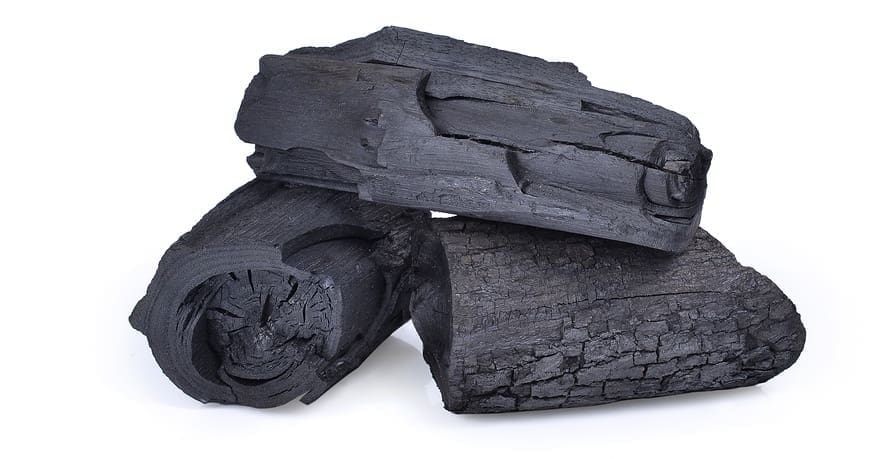
Carbo vegetabilis
Latin name: Carbo vegetabilis
Short name: Carb-v
Common name: Vegetable Charcoal | Charcoal | Wood Charcoal | Carbon | Activated Charcoal
Primary miasm: Psoric Secondary miasm(s): Sycotic, Syphilitic
Kingdom: Minerals
Family: Carbonaceous substance
- Symptomatology
- Remedy Information
- Differentiation & Application
Prepared by charring birch wood or beech wood in the absence of air, then triturated for homeopathic use. A highly porous substance capable of absorbing gases and toxins.
Widely used in conventional medicine for poisoning and flatulence; also as a deodoriser and purifier in air and water filtration systems.
Proved by Hahnemann and published in Materia Medica Pura, further expanded by Hering, Boenninghausen, and Clarke
- Digestive system – stomach, intestines, liver, portal circulation
- Venous system – stasis, haemorrhoids, cyanosis
- Respiration – especially in dyspnoea from weakness
- Skin and mucous membranes – low vitality, ulceration
- Circulatory system – collapse, poor oxygenation
- General vitality – exhaustion, debility, asphyxia
- Cold air and fanning (even rapidly)
- Belching and passing flatus
- Raising the head
- Loosening clothing
- After sleep or rest
- Warmth in acute chill, cold in chronic heat
- Warmth and heat (especially of bed or room)
- Eating even small amounts
- Rich, fatty, or fermented foods
- Alcohol, milk, or butter
- Lying flat or on back
- Evening and night
- Suppressed eruptions or discharges
- Arsenicum album – Also has collapse, but with great restlessness, anxiety, and thirst
- Camphora – Cold collapse, but more acute, sudden, and with fear of death
- China – Bloating and debility after loss of fluids, but more irritable, < light pressure
- Lycopodium – Flatulence and weakness, but more right-sided, with arrogance or lack of confidence
- Antimonium tart – Rattling respiration and weakness, but more wet, oedematous, and sluggish
- Complementary: Kali carb., China, Phosphorus
- Antidotes: Camphora, Arsenicum
- Follows well: Nux vomica, Lycopodium
- Precedes well: Sulphur, Sepia
Carbo vegetabilis is the reviver of vital force—a remedy for when the system has nearly ceased to function, yet some spark remains. It represents the person who is cold, ashen, flatulent, and faint, overwhelmed by internal stagnation. Whether from loss of fluids, shock, or chronic debility, Carbo vegetabilis restores through the vital breath—oxygen, air, and circulation. When the patient gasps for air, craves to be fanned, and cannot digest even a morsel, Carbo vegetabilis brings light into the shadows.
- First remedy to consider in collapse with cold skin and air hunger
- Excellent for flatulent dyspepsia, especially in the elderly or weak
- Useful in chronic haemorrhoids with burning and oozing
- Revives vitality after loss of fluids, haemorrhage, or shock
- A must-have remedy for resuscitative use in emergency settings
Mind
- Indifference, apathy
- Anxiety, health about
- Desire for air, being fanned
Stomach
- Bloating, < after eating
- Eructations, offensive
- Nausea, faintness with
Abdomen
- Flatulence, upper abdomen
- Pain, cramping, better from belching
- Distension, tight clothing intolerable
Chest & Respiration
- Dyspnoea, must be fanned
- Suffocation, worse lying down
- Cough, hard, dry, with cold sweat
Generalities
- Coldness, extreme
- Collapse, post-haemorrhagic
- Discharges, offensive
- Weakness, vital, from loss of fluids
Samuel Hahnemann – Materia Medica Pura: Original proving; collapse and indigestion themes
C. Hering – Guiding Symptoms: Collapse, faintness, air hunger, offensive discharges
James Kent – Lectures on Homoeopathic Materia Medica: Air hunger, collapse, venous stasis
William Boericke – Pocket Manual of Homoeopathic Materia Medica: Clinical and digestive indications
John Henry Clarke – Dictionary of Practical Materia Medica: Digestive disorders, collapse, fevers
